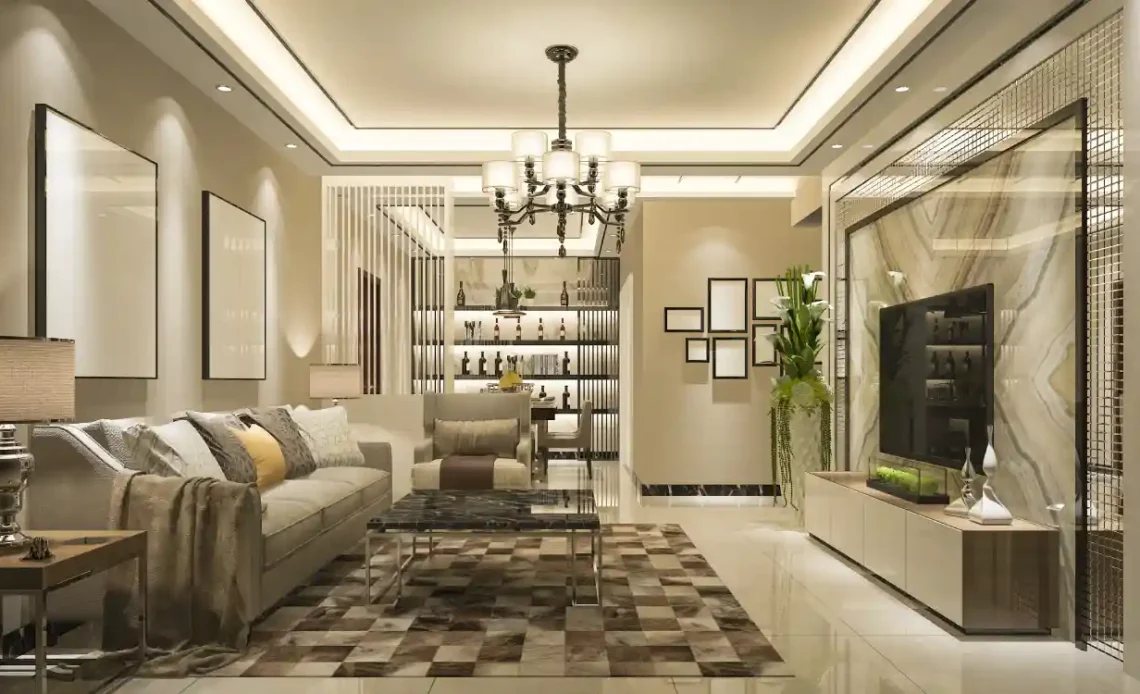Ideally, a full home lighting design begins right from the home planning. It involves the teams of electrical engineers, architects, interior designers, lighting consultants or lighting consulting agencies equipped with all tools, lighting fixtures, installation capabilities, and finishing abilities.
For the sake of the ease of your understanding, we devised a full home lighting design process into the following main steps.
Pre-requisites:
Before delving into full home lighting design, you must be accustomed to basic lighting terminologies, such as:
- Luminous Intensity: It is the measure of visible light in a particular direction per unit solid angle.
- Luminous Flux: It is the measure of the visible light output of a light source.
- Lux: It is the total amount of light that falls on a surface.
- Luminaires: It includes different light fixtures, such as recessed light fixtures, direct, indirect, pendants, under-cabinet, wall wash, sconces, task light fixtures, LED bulbs and tubes, etc.
- Wires: Different wire gauges depending on light requirements.
- Smart Light Fixtures: IoT and AI-capable light sockets & fixtures plus controls with desired internet network.
Know Full Home Lighting Design Techniques
You must have the latest knowledge of various lighting design techniques, including:
Downlighting:
It places light below the light source. They are of two types: diffuse, which is used to design a low contrast space and concentrated, which is used to design a high contrast space.
Uplighting:
It places light above the light source. They are also diffuse and concentrated types.
Wall Washing:
It involves uniformly lighting a wall from top to bottom in a graded wash. It hides imperfections in the wall surface and flattens the texture.
Wall Grazing:
It has the same technique used in wall washing, but the light source is placed closer to the wall. Thus, it reveals the texture of the wall surface.
Cove Lighting:
It illuminates perimeter coves to highlight architectural features and shed light on the ceiling.
Silhouetting:
It refers to backlighting an object to illuminate artwork, branding, or architecture for aesthetics.
Ceiling Pendant Light:
It is a single pendant light bulb hanging on a wire with a shade. A chandelier is a modern way of using multiple small bulbs together.
Ceiling Dome Light:
It is a popular light fixture for a room with a lower ceiling. It gives a soft glow.
Ceiling Skylight:
A large lightbox is attached to the ceiling in line with the ceiling. It possesses several fluorescent tubes to offer good ambient light.
Sconces:
They are wall-mounted lights. It considers the appearance of fixtures, light beam width, and beam direction.
Floor Light:
It creates floor wash for mood light effects.
Shelf Lighting:
It applies to open shelves or shelves with glass doors to incorporate feature lighting in a room.
Object Light:
It lights an object from different angles and perspectives.
Prepare Lighting Plans:
Let your civil engineer or architect prepare floor plans for your home with full details. So, you can visualise doors, Windows, furniture, and all features in the room. Now outline what will take place in each room and analyse all possible activities during day and night periods.
The best way is to maximise daylight usage in each room is to install replacement windows in Long Island. Once you’re done with daylight, think of nightlights and determine the requirements. Select light sources according to the needs of the space and place their symbols in the electrical plan for each floor.
Optimise the placements of sockets and switches in the electric plan and draw an optimised wiring network. Now, you will be able to select lighting fixtures for full home lighting design solutions taking help of lighting consultants.
Implementation:
Once your new home is ready or you are ready for an existing home renovation, call your lighting consulting agency. At Artiste Lumiere, we provide a full range of services for your full home lighting design solutions. We will implement your lighting plan using our team of qualified electricians. We properly install wiring and various light fixtures, including smart controls, using a mobile app.
Count Implementation Cost:
We count the total implementation cost considering the following factors.
- Environment
- Design
- Installation
- Equipment
- Energy
- Maintenance
We minimise your maintenance costs by selecting long-lasting electrical and other associated materials. We prefer LEDs the most. Thus, we cut frequent replacements of bulbs and other fixtures in your full home lighting design solutions. Our team of electrical and software engineers use smart lighting technologies to save your energy bill.
Outdoor Lighting Design for Home
Outdoor lights serve somewhat different purposes, and we should consider them during the outdoor lighting design process. Those purposes are:
- Aesthetics: Exterior lighting design enhances the façade and landscape surrounding your home building, making its aesthetic pleasing at night.
- Utility: By illuminating the porch and paths in the landscape, we facilitate easy navigation, which enhances the utility.
- Security: By illuminating the ground near entrances, fences, and paths improve security aspects of the building and its exterior parts.

